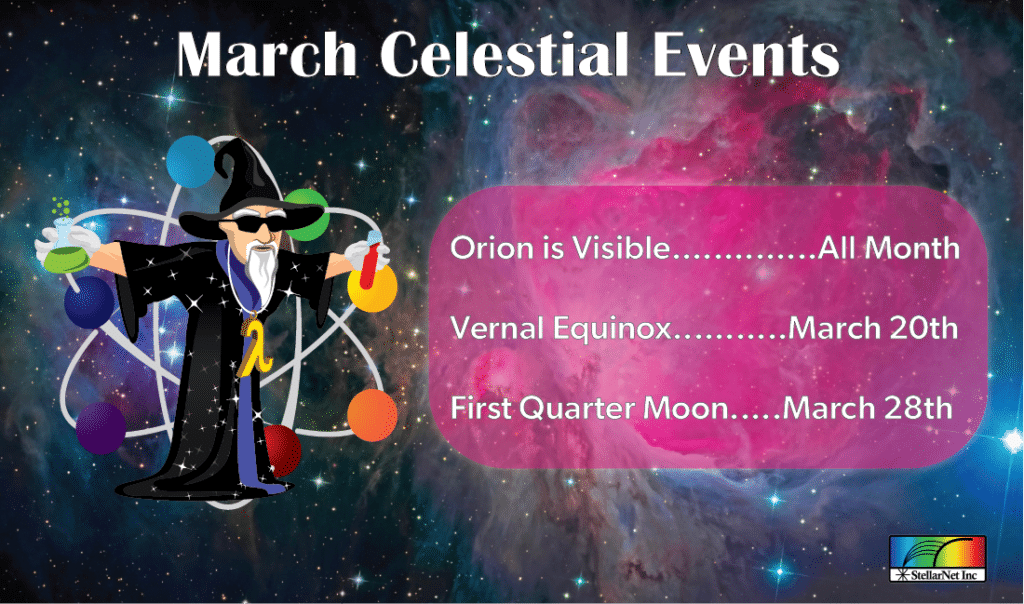
All throughout March, unpack those binoculars and set up that telescope to view these celestial wonders. The Orion Constellation is visible to the naked eye in the southern part of the sky throughout the month. Using spectroscopic observation methods, astronomers can study the chemical composition of stars and gas clouds in this constellation and gain insight to the evolution of cosmic structure formation. Check out our recent post on using astrospectroscopy filters to view the Orion nebula.

If you enjoy studying the lunar phases, on March 28th, the First Quarter Moon will be visible in the night sky. Observing the Moon’s spectrum can provide information about its surface composition and help astronomers better understand the Moon’s history and evolution. With the help of
near-infrared spectroscopic technology, scientists are capable of studying the light emitted by materials in lunar soil to determine it’s composition. NASA, for example, created a powerful near-infrared spectrometer system to study the nature of the hydrogen detected in the soil allowing them to discover the nature of various ices and minerals. Learn more about our new NIR spectrometers with extended wavelength range.

Not every Monday has to be boring! On March 20th you can look forward to the Vernal Equinox. Once a year the Sun passes directly above the Earth’s Equator, marking the start of Spring in the Northern Hemisphere and Autumn in the Southern Hemisphere. During this celestial event, there are equal number of hours in the day as the night. This is a great opportunity for scientists to study the composition of the sun and observe its spectrum using ultraviolet, visible, and NIR spectroscopic techniques. Learn more about our Solar-RAD solar spectral analysis systems.





